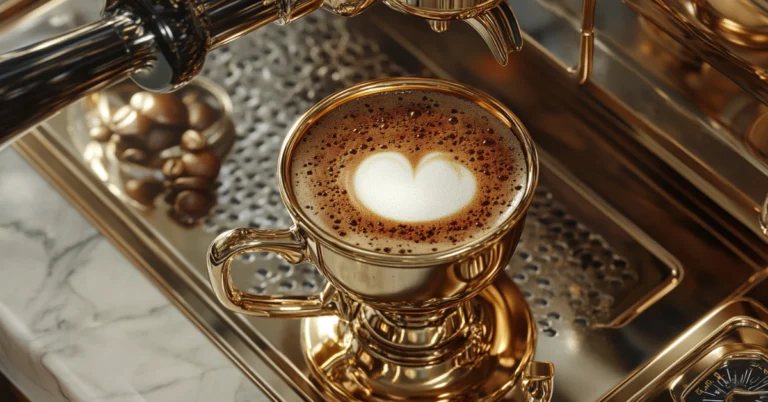Have you ever had an espresso drink that changed your taste buds? It was bold, rich, and exactly what you wanted. That feeling isn’t random. Every espresso drink has the chance to be perfect, blending flavors and textures just right.
This guide will help you find that perfect espresso. Whether you’re new to espresso or want to get better, we’ll cover the basics. We’ll talk about the tools, beans, and techniques that make great espresso drinks. By the end, you’ll know how to pick the right drink for you, from classic shots to new creations.
Table of Contents
Key Takeaways
- Explore foundational knowledge to master any espresso drink.
- Learn equipment choices that impact flavor, like grinders and espresso machines.
- Discover how bean origin and roast levels shape each espresso drink’s taste.
- Follow step-by-step methods for consistent, expert-level results.
- Build confidence moving from basics to advanced techniques.
The Art and Science of Espresso
Espresso drink mastery starts with understanding its core principles. This section breaks down the techniques, history, and terminology defining this iconic coffee style.
What Makes Espresso Unique
Espresso isn’t just strong coffee. It’s made under 9 atmospheres of pressure. This forces hot water through finely ground beans. It creates a crema layer and intense flavor. Key factors:
- Grind size: Fine, like powdered sugar
- Extraction time: 25–30 seconds per shot
- Volume: 1 fluid ounce (30ml) as a standard
The History of Espresso Culture
Espresso’s journey started in 1901 with Italian inventor Luigi Bezzera’s first patent. Here’s its evolution:
| Year | Event |
|---|---|
| 1901 | Bezzera patents the first espresso machine |
| 1946 | Achille Gaggia’s lever machine revolutionizes crema quality |
| 1961 | Faema introduces the first electric pump-driven machine |
Understanding Espresso Terminology
Mastering the lingo unlocks deeper appreciation. Here’s a quick guide:
Crema: The golden foam on top caused by oils and pressure.
Ristretto: A shorter shot (15–18 seconds), richer and sweeter.
Lungo: Extended extraction (over 30 seconds), more bitter and robust.
“Espresso is not just a beverage—it’s a cultural fingerprint.” – Italian Coffee Association
Essential Equipment for Crafting Espresso Drinks
Mastering your espresso recipe begins with the right tools. Each piece of equipment affects taste and texture. Let’s explore what you need to brew like a pro.
- Semi-automatic: Manual grinding and tamping with automated pressure. $200–$1,500 (e.g., Rancilio Silvia).
- Automatic: Pre-set brew settings. $800–$3,000 (e.g., Gaggia Classic).
- Super-automatic: Fully automated. $1,000–$5,000 (e.g., Breville Barista Express).
Key Accessories:
- Tamper: Presses coffee grounds firmly. Look for a 58mm stainless steel model.
- Scale: Measure coffee and water ratios precisely.
- Distribution tool: Ensures even coffee bed for optimal extraction.
Grinders Matter Most
| Feature | Burr Grinder | Blade Grinder |
|---|---|---|
| Grind Consistency | Uniform particles for espresso recipe success | Rough, uneven results |
| Price Range | $50–$200+ | $20–$40 |
| Maintenance | Long-lasting blades | Overheats easily |
For beginners, consider Moka pots ($20–$50) or portable hand pumps ($100–$300). But, don’t forget a quality grinder and tamper. They’re key to your espresso recipe success.
Choosing the Right Coffee Beans for Your Espresso
Every sip of your espresso drink begins with the bean. The bean’s origin affects its taste. Roast levels and type also play a big role in the drink’s balance and complexity.
Origin and Flavor Profiles
Geography shapes taste:
- Ethiopian beans add citrus brightness to your espresso drink.
- Brazilian beans offer nutty, sweet notes for a classic profile.
- Indonesian beans bring earthy, herbal undertones.
Roast Levels and Their Impact
| Roast Level | Flavor Notes | Best For |
|---|---|---|
| Light | Bright acidity, fruit | Delicate espresso drink variations |
| Medium | Smooth caramel, nuts | Classic espresso shots |
| Dark | Chocolate, caramel | Bold, full-bodied drinks |
Single Origin vs. Espresso Blends
Single-origin beans show off unique traits, like a Guatemalan bean’s floral notes. But they might not be balanced. Blends, on the other hand, mix beans for consistent flavors. Baristas often blend for latte bases, while single origins are great for tasting flights.
“Store beans in airtight containers. Use within 2-4 weeks of roasting for peak flavor in any espresso drink.”
Try different origins and roasts to find your perfect espresso drink. Freshness is key: check roast dates and avoid pre-ground beans for the best taste.
Mastering the Perfect Espresso Shot
Getting your espresso recipe just right begins with precision. Let’s dive into three essential steps to improve your skills:
Grinding Techniques
- Adjust the grind size to fit your machine’s pressure. Use finer grinds for high-pressure, coarser for low.
- Keep the grind consistent. Static buildup can mess with the flow. Use a grinder with a doser or add anti-static agents.
- Grind the beans just before tamping. Old grounds can dull the flavor.
Tamping Methods
Apply 30 pounds of pressure evenly. Try these methods:
- Traditional: Press straight down with flat distribution.
- WDT (Wedging Distribution Technique): Pack beans in layers for even density.
Make sure there are no air pockets to avoid channeling.
Extraction Time and Volume
Shoot for a 25–30 second extraction with a 1:2 coffee-to-liquid ratio (e.g., 18g coffee to 36g liquid). Adjust the grind size if shots are too fast (coarser) or slow (finer). Watch the flow rate—ideal liquid should pour like honey.
“The espresso recipe isn’t just a formula—it’s a dialogue between your tools and coffee.”
Keep track of your variables: grind setting, tamping style, and yield time. Small tweaks can turn bitterness into balance. Practice these steps every week to build muscle memory and taste the improvement.
The Ultimate Espresso Drink Chart
Visual learners and coffee fans will love the espresso drink chart. It’s a key guide for exploring espresso-based drinks. It organizes popular drinks by milk content, serving sizes, and how they’re made. This makes it simple to compare drinks like cappuccinos and lattes at a glance.
Each entry in the chart gives you important details. It shows the espresso to milk or water ratio, standard serving sizes, and the type of cup or glass used. For instance, a macchiato has a small serving, while a latte has more milk. The chart also tells you about each drink’s texture and flavor, helping you find what you like best.
“This chart is your compass for navigating the espresso universe. It breaks down complexities into clear choices.” – Sarah Thompson, Coffee Specialist
Use the espresso drink chart to:
- Compare drinks side by side
- Discover lesser-known options like cortados or flat whites
- Adjust ratios to personalize drinks
Whether you’re building a café menu or trying new things at home, this chart is your go-to. It answers questions like, “Which drink uses half-steam milk?” or “What’s the right cup for a cortado?” It’s easy to follow, even for beginners.
Classic Espresso Drinks Every Coffee Lover Should Know
Drinks with espresso are key in coffee culture. They mix simplicity with art, opening up new flavors and techniques. Let’s look at five must-know recipes.
American
This drink started with WWII soldiers. It’s a mix of espresso and hot water. It’s different from drip coffee because it focuses on espresso’s strong taste. Try a 1:2 espresso-to-water ratio for the best taste.
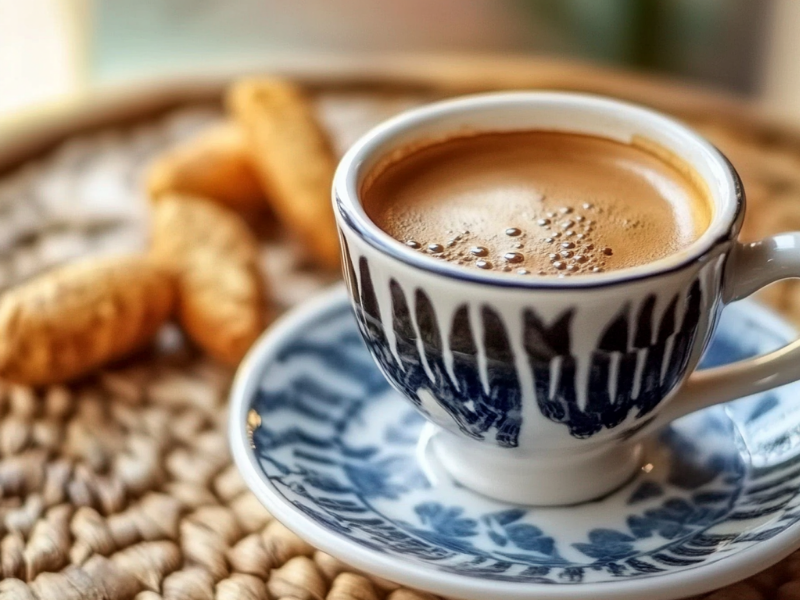
Cappuccino
The cappuccino is Italy’s favorite morning drink. It has a 1:1:1 ratio of espresso, steamed milk, and foam. The foam adds texture, and cocoa dust makes it traditional. Use foam that’s less than 160°F for the best creaminess.
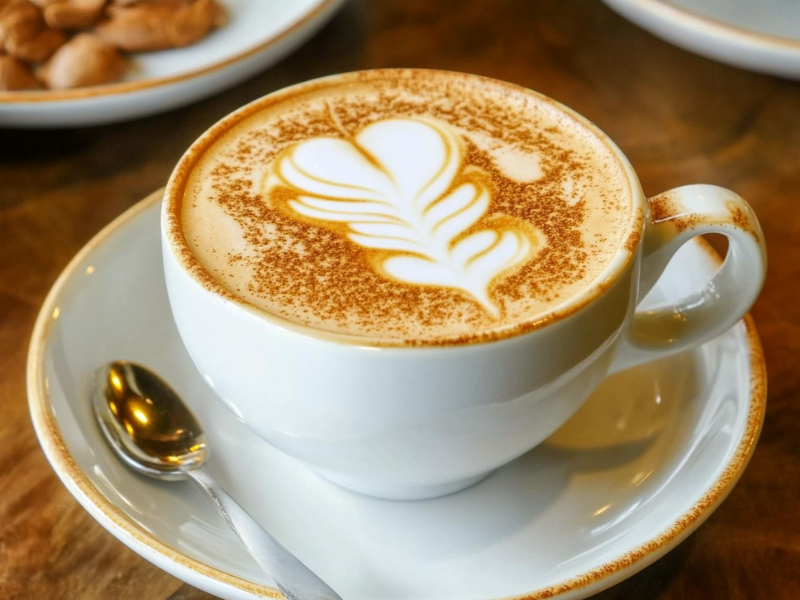
Latte
Lattes are known for their creamy milk and 1-2 shots of espresso. The 1:3 ratio makes the milk sweet, perfect for adding flavors like vanilla syrup. Steam the milk to create microfoam that’s under 1/4 inch thick.
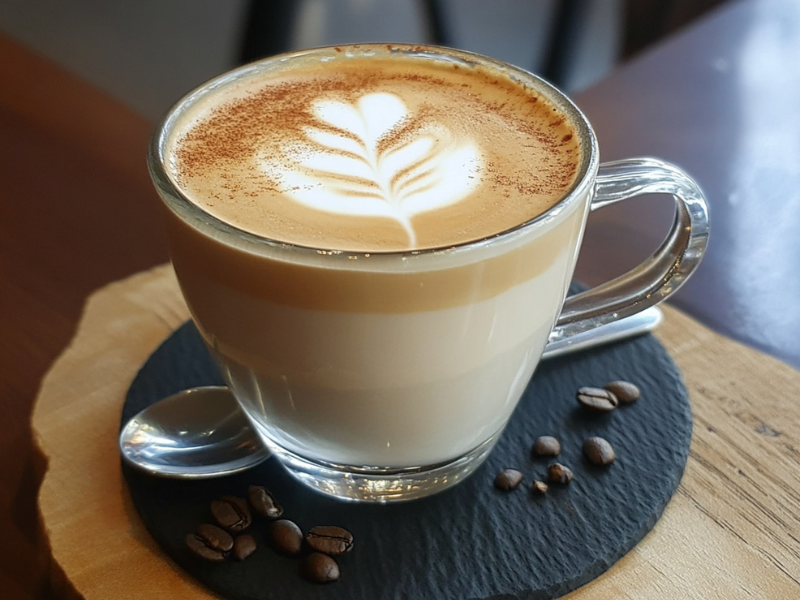
Macchiato
The macchiato is Italy’s “marked” coffee. It has a shot of espresso and a bit of foam. Traditional macchiatos focus on the espresso’s taste. Serve it in a demitasse cup for the real deal.
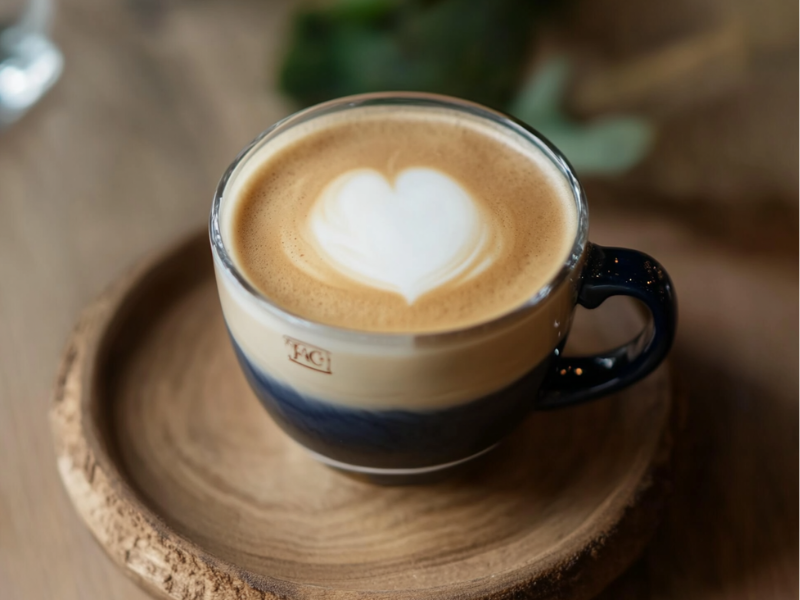
Mocha
Mochas are like desserts, with espresso, melted chocolate, and steamed milk. Top it with whipped cream and cinnamon. Use dark chocolate (70% cocoa) to keep it from being too sweet.
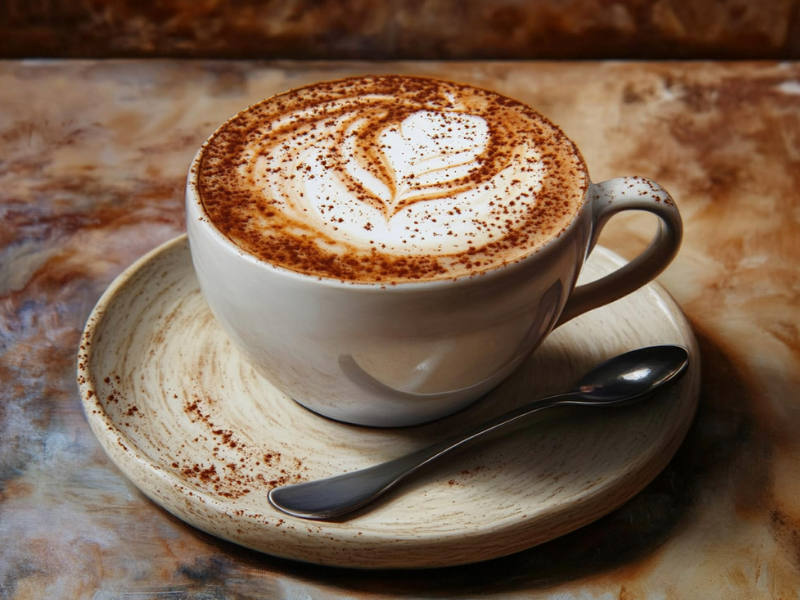
Learning these drinks is the first step to trying new things. Change the ratios or add toppings to make it your own. But always start with good beans and the right technique.
Refreshing Iced Espresso Drinks for Hot Days
Beat the heat with iced espresso drinks that mix bold flavor with cool refreshment. These recipes focus on keeping the texture and aroma right, even over ice.
Iced Americano
Learn the hot-bloom technique: pull a double shot, then bloom the beans with hot water. Pour it over ice in a glass. This keeps the espresso oils in, so the flavor doesn’t get watered down. Use big ice cubes to melt slower.
Iced Latte
Make layered lattes by chilling the milk first. Steam it to 140°F, then pour espresso over ice in the glass. Top with steamed milk to keep it warm. Add a sprinkle of cinnamon for a nice touch.
Espresso Tonic
Combine equal parts tonic water and espresso. Pick a low-sugar tonic like San Pellegrino for clearness. Top with lemon twists or mint for extra citrus. Shake it gently before serving.
Cold Brew vs. Iced Espresso
- Cold Brew: Steep for 12–24 hours, smooth, low acidity. Great for long sips.
- Iced Espresso: Extract in 25–30 seconds, sharp, high caffeine. Perfect for quick energy.
Keep pre-made bases in airtight containers for up to 3 days. Use glass tumblers to show off the layers and keep it from getting watered down.
Creative Drinks with Espresso to Expand Your Palate
Explore drinks with espresso that will surprise you. These recipes mix old traditions with new twists.
- Spanish Cortado: A 1:1 shot of espresso and smooth steamed milk, topped with cinnamon.
- Australian Flat White: Rich milk with a double shot, loved in Sydney’s cafes.
- Vietnamese Egg Coffee: Espresso, sweetened condensed milk, and egg yolk for a creamy feel.
“The best creative drinks balance bold espresso with unexpected flavors,” says Maria Lopez, head barista at NYC’s Grind & Pour Café.
Modern cafés try new drinks with espresso like:
- Sparkling espresso spritz: Mix espresso, prosecco, and citrus.
- Non-alcoholic affogato: Soak gelato in hot espresso for a quick dessert.
- Herbal infusions: Add lavender syrup or cardamom powder for a twist.
Pairing is crucial. Match your bean’s flavor with lemon zest or caramel. Try 1:1 espresso to matcha for a green tea latte.
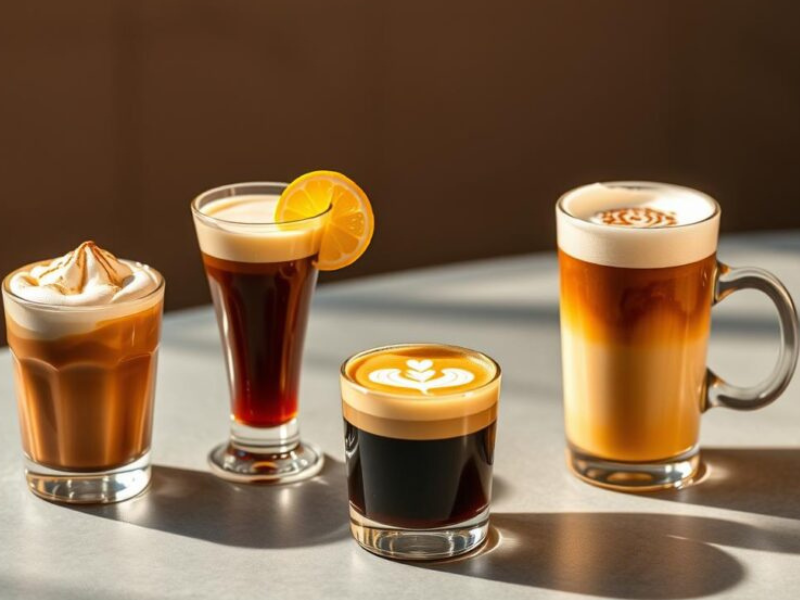
Make your next drinks with espresso by adding vanilla syrup or a salted dark chocolate shot. Let your creativity shine while keeping espresso’s essence in mind.
Espresso Recipe Techniques for Barista-Level Results
Mastering the final steps of your espresso recipe can turn a good drink into a masterpiece. These techniques improve texture, presentation, and flavor balance. They are key to making café-quality drinks at home.
Milk Steaming and Frothing
Protein and fat in milk create microfoam when steamed right. Dairy milk (3.25% fat) needs 150°F (65°C) for velvety foam. Non-dairy options like oat milk require 140°F (60°C) to avoid separation. Follow this guide:
| Milk Type | Temperature | Texture Goal |
|---|---|---|
| Whole Milk | 150°F | Smooth microfoam |
| Almond Milk | 140°F | Light, airy foam |
- Point the steam wand just below the milk surface
- Listen for a low hum as air incorporates
- Cool to 140°F before pouring
Latte Art Fundamentals
Create classic patterns using these steps:
- Pour steamed milk at a 1-inch height
- For a heart: Wiggle the pitcher side-to-side 1/4″ from the surface
- For a rosetta: Rotate the cup slowly while maintaining a steady pour
Syrup and Flavor Additions
Customize your espresso recipe with homemade syrups. Simmer equal parts sugar and water until dissolved, then add extracts or fresh ingredients:
- Pumpkin spice: Cinnamon, nutmeg, clove + brown sugar
- Caramel: 1:1 sugar-to-water ratio, simmer 15 minutes
Add ½ oz syrup before steamed milkto prevent flavor dilution. Avoid over-sweetening—aim for 10% of total volume.
Practice each technique weekly to build muscle memory. Perfecting these steps turns basic espresso shots into barista-worthy creations.
Troubleshooting Common Espresso Problems
Even expert baristas face challenges with espresso drinks. This guide helps you identify and fix issues to perfect your brew. Let’s tackle the most common problems.
Bitter or Sour Taste
Unpleasant flavors often signal brewing errors. Use this chart to diagnose and adjust:
| Defect | Likely Cause | Solution |
|---|---|---|
| Bitterness | Over-extraction | Coarsen grind or shorten brew time |
| Sourness | Under-extraction | Fine grind or extend brew time |
| Astringency | Stale beans | Use fresh beans roasted within 7-21 days |
Inconsistent Extraction
Uneven shots often show as streaky flow or weak flavor. Fix this with:
- Evenly distribute grounds before tamping
- Check for clogged group heads or gaskets
- Use a level tamper motion
Crema Issues
Healthy crema forms a dark, velvety layer lasting 20+ seconds. Troubleshoot with these steps:
Thin or bubbly crema?
- Verify beans are less than 3 months old
- Use medium-dark roasts for optimal oils
- Ensure 9 bars of consistent pressure
Quick Troubleshooting Checklist
- Check grind consistency every session
- Store beans in airtight containers
- Calibrate your scale and timer regularly
- Descale machine monthly
Remember: Every problem points to an easy fix. Adjust one variable at a time to isolate causes. With practice, you’ll master your espresso drink quality.
Seasonal Espresso Drink Inspirations
Make your coffee time special with drinks with espresso that fit the season. Change flavors to match the weather and what’s in season.
- Pair warmth with cold weather: Use spices like cinnamon or cardamom in winter.
- Balance flavors with the season’s produce: Add berries in summer or citrus in spring.
- Adjust texture: Try iced blends in summer or creamy lattes in fall.
Winter: Warm up with a Spiced Mocha. Mix espresso, hot chocolate, and a sprinkle of nutmeg. Add a dash of clove syrup for a twist.
Spring: Lighten up with floral notes. Try a Espresso Spritzer with lavender syrup, sparkling water, and lemon.
Summer: Cool down with a Mango-Espresso Smoothie. Blend frozen mango, espresso, and almond milk. Or try an iced Espresso Lemonade with fresh lemonade and mint.
Fall: Embrace harvest flavors. A Pumpkin-Spice Latte mixes espresso, pumpkin purée, cinnamon, and nutmeg. Try a Caramel Apple Espresso with apple cider and caramel.
Try new things with seasonal ingredients from local farmers’ markets. Use fresh herbs, fruits, or spices instead of artificial syrups. Adjust sweetness and texture to fit the season’s mood.
Conclusion: Your Journey to Espresso Excellence
Your journey into the world of espresso has just begun. You’ve learned from the basics to advanced techniques. Every step, from picking beans to frothing milk, enhances your skills.
Whether you start with an Americano or try seasonal syrups, you learn more. Each choice helps deepen your understanding of espresso.
Mastering espresso is all about practice. Try different grind sizes, track how long you extract, and mix flavors. The guide’s tips on fixing crema or finding the right roast are always there to help.
Being creative and precise is key. Try steaming milk for latte art or blending spices into a winter mocha. It’s all about finding your style.
Start with a simple recipe, like a cappuccino or iced espresso tonic. Use what you have and make small changes. Every time you pour or tamp, you get better.
This knowledge lets you innovate while keeping the basics in mind. Now, your next espresso drink can be your first step to becoming a home barista.
FAQ
What are the essential components of an espresso recipe?
To make an espresso, you need freshly ground coffee beans, a good espresso machine, and water. It’s important to pick the right grind size and tamp it correctly. Also, keep an eye on the extraction time and temperature.
How can I choose the right coffee beans for my espresso?
When picking coffee beans, think about the origin, roast level, and whether you like single-origin or blends. Choose beans that offer a good balance of flavors and are fresh for the best taste.
What is the difference between an iced espresso drink and cold brew?
Iced espresso drinks start with hot espresso that cools down. Cold brew, on the other hand, steeps in cold water for a long time. Iced espresso is richer, while cold brew is smoother and less acidic.
How can I troubleshoot a bitter or sour taste in my espresso?
Bitterness often comes from over-extraction or too fine a grind. Sourness is usually from under-extraction or too coarse a grind. Try adjusting the grind, tamping, or extraction time to fix these problems.
What are some popular iced espresso drinks to try?
You might enjoy an Iced Americano, Iced Latte, or Espresso Tonic. Each has its own taste and can be made even better with syrups or garnishes.
What is the importance of crema in espresso?
Crema is the golden foam on top of a good espresso. It shows the espresso is fresh and well-made, improving the drink’s taste and feel.
How can I incorporate syrups and flavors into my espresso drinks?
Use homemade or store-bought syrups to add flavor to your espresso. Start with a little and adjust to taste, making sure the espresso’s natural flavor comes through.
What tools do I need to make espresso at home?
You’ll need an espresso machine, a burr grinder, a tamper, and a scale. A milk frother and distribution tool can also help make your espresso better.
There are no reviews yet. Be the first one to write one.

